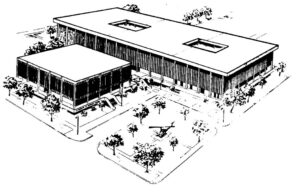CORRESPONDENCE COURSE OF
THE U.S. ARMY MEDICAL DEPARTMENT CENTER AND SCHOOL
SUBCOURSE MD0852 EDITION 300
INTRODUCTION

Due in part to the development of multiple reagent strips for urinalysis, more laboratory tests are now performed each year on urine than on any other body fluid.
A typical urinalysis includes tests for glucose, protein, pH, ketone bodies, bilirubin, occult (unseen) blood, various blood cells, urobilinogen, and specific gravity and microscopic examination of urinary sediment. Many common abnormalities can be recognized by urine studies. Urine tests are the method of choice to monitor the treatment of diabetes.
Urine is an excretion product, but it is usually clean and sterile. It is primarily composed of urea, sodium chloride, and water. The stench of stale urine is largely due to the decomposition of urea to ammonia by bacteria. The odor of fresh urine is not unpleasant to most persons. Urine is not a significant source of infection. The disagreeable characteristics arising from decomposition can usually be avoided.
This subcourse will focus on the analysis of urine. The contents of the text will present and discuss the topics outlined above. However, you should remember that the subcourse is not intended to provide you with all that is known about urinalysis. For this reason, you should read other texts and journals, discuss the subcourse contents with your fellow workers and supervisors, and search other sources of knowledge to expand your knowledge of this important topic.
Subcourse Components:
This subcourse consists of three lessons. The lessons are as follows:
Lesson 1. The Collection and Preservation of Specimens; Macroscopic and Physical Examination of Urine.
Lesson 2. Chemical Tests for Substances in Urine.
Lesson 3. The Microscopic Examination of Urinary Sediment.
Here are some suggestions that may be helpful to you in completing this subcourse:
–Read and study each lesson carefully.
–Complete the subcourse lesson by lesson. After completing each lesson, work the exercises at the end of the lesson
–After completing each set of lesson exercises, compare your answers with those on the solution sheet that follows the exercises. If you have answered an exercise incorrectly, check the reference cited after the answer on the solution sheet to determine why your response was not the correct one.
———————-
Download Here
Urinalysis
Length: 97 Pages
Estimated Hours to Complete: 7
Format: PDF file
Size: 3.4 MB
—————————-
Anyone may take this course. However, to receive credit hours, you must be officially enrolled and complete an examination furnished by the Nonresident Instruction Branch at Fort Sam Houston, Texas. Enrollment is normally limited to Department of Defense personnel. Others may apply for enrollment, but acceptance is not guaranteed.
—————————-
TABLE OF CONTENTS
INTRODUCTION
1 THE COLLECTION AND PRESERVATION OF SPECIMENS;
MACROSCOPIC AND PHYSICAL EXAMINATION OF URINE
Section I. Collection and Preservation of Specimens
Section II. Macroscopic and Physical Examination of Urine.
Exercises
2 CHEMICAL TESTS FOR SUBSTANCES IN URINE
Section I. Protein in Urine
Section II. Glucose and Other Reducing Substances in Urine
Section III. Ketone Bodies in Urine
Section IV. Blood in Urine
Section V. Bilirubin and Urobilinogen in Urine
Section VI. Calcium in Urine
Section VII. Porphyrins in Urine (Porphyrinuria)
Section VIII. Miscellaneous Tests
Section IX. Urinary Calculi
Exercises
3 THE MICROSCOPIC EXAMINATION OF URINARY SEDIMENT
Section I. Preparation and Illumination
Section II. Microscopic Examination of Organized Sediment
Section III. Microscopic Examination of Unorganized
Sediment
Section IV. The Microscopic Examination of Stained Urinary
Sediment Using the Sternheimer-Malbin Stain
Exercises
—————————-
Sample
LESSON 1 The Collection and Preservation of Specimens; Macroscopic and Physical Examination of Urine.
TEXT ASSIGNMENT Paragraphs 1-1 through 1-15.
LESSON OBJECTIVES After completing this lesson, you should be able to:
1-1. Select the statement that best describes the clinical importance of urinalysis.
1-2. Select the statement that best describes a specific type of urine specimen.
1-3. Select the statement that best contrasts the two special methods of urine collection.
1-4. Select the statement that best describes the different means to preserve a urine sample.
1-5. Select the volume that is the median amount of urine produced by an average adult during a 24 hour period.
1-6. Select the definition that correctly describes the following terms: polyuria, oliguria, or anuria.
1-7. Select the substance(s)/conditions(s) which might cause urine to be a certain color.
1-8. Select the statement that best describes the macroscopic means of evaluating a urine sample.
SUGGESTION After studying the assignment, complete the exercises at the end of the lesson. These exercises will help you to achieve the lesson objectives.
—————————-
Download Here
Urinalysis
